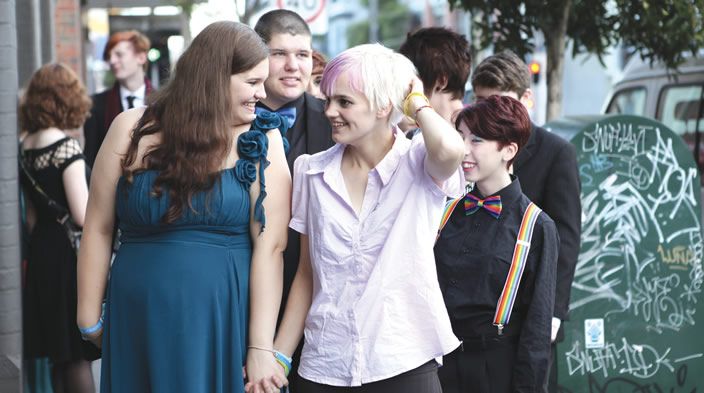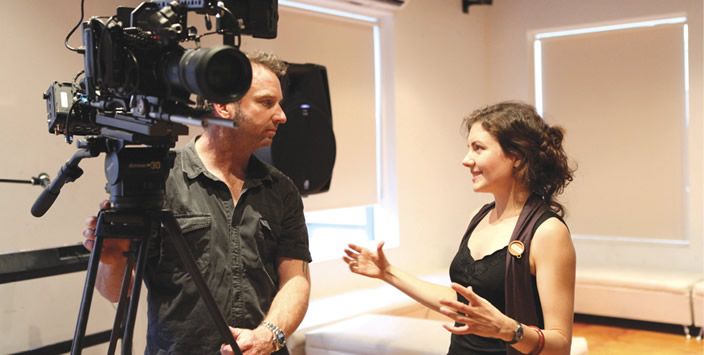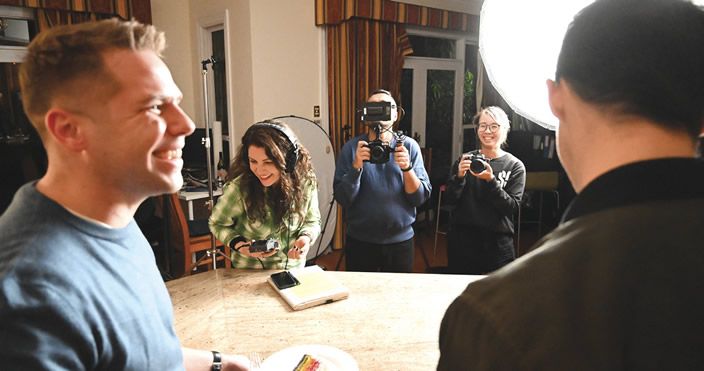
Everyone deserves to feel safe and respected at school, regardless of who they love or how they identify. But LGBTIQA+ people in Australia continue to be confronted with stigma, prejudice, and discrimination, Will Brodie writes.






































































































































Education in Full Colour
2022 September IE


Everyone deserves to feel safe and respected at school, regardless of who they love or how they identify. But LGBTIQA+ people in Australia continue to be confronted with stigma, prejudice, and discrimination, Will Brodie writes.

The consequences of this are dire.

LGBTIQA+ Health Australia statistics from 2021 show that more than a quarter of LGBTQA+ teens under the age of 17 and almost half of all trans people between 14 and 25 have attempted suicide.
Activist and former teacher (and IEU member) Suzi Taylor can’t accept these terrible numbers. She’s challenging them head on with her Full Colour Project, which aims to “eliminate LGBTIQA+ discrimination and end the disproportionate rates of LGBTIQA+ youth suicide”.
“Our goal is to make schools and workplaces consistently safe, respectful, inclusive spaces, and to empower LGBTIQA+ youth,“ Taylor said.
“We see schools, in particular, as the starting point for attitudinal change.”
Taylor made the documentary Love In Full Colour in 2012, after she read about the suicides of American queer students. A school district was accused of having “a culture of teachers and school leaders turning a blind eye to homophobic and transphobic bullying”, and of the schools “lacking any kind of inclusive messaging or curriculum”.
It resonated for Taylor. During her education “prejudice was normalised” and LGBTIQA+ people were “invisible”. As a queer teacher herself, she hadn’t known how to find resources to change these unacceptable ‘norms’.
“I taught in schools where I didn’t feel safe to be honest about myself.”
That’s crucial because “so much of teaching is about giving of yourself”.
She says the US story got her thinking about education in Australia “and whether educators and principals are held accountable for the culture they’re creating – that’s where all these issues start”.
Queer Formal
Taylor didn’t want to “just chronicle tales of bullying”. When she discovered the Same Sex Formal (subsequently renamed Queer Formal), she was excited.
“It was created for all the queer teens who couldn’t attend their own school formals or debutante balls, either because they were overtly forbidden from bringing a same-sex partner or because they just knew they wouldn’t feel welcome.
“I knew immediately that the Queer Formal could be a positive, life-affirming event – and it could be an empowering way to explore some tough subject matter.”
Taylor invited Queer Formal attendees to participate in a documentary and within a week, she had 10 young people, spanning the spectrum of gender identity from widely varying schools, localities, and economic and religious backgrounds.
“I knew that if I could find a way to weave their stories together, we’d have a unique window into the lives and perspectives of queer teenagers in Melbourne, 2012.”
Love in Full Colour, now celebrating its 10th birthday, was that window. Now Taylor is completing a sequel, 10 Years in Full Colour, revisiting her original subjects.
Show of support
Taylor says there is often an audible gasp amongst audiences when participant Harry shares the following anecdote.
“My school was quite religious. At one point one of the teachers put up posters all around the school with two guys holding hands and a big cross through it.”
However, in the upcoming sequel, Harry provides a heart-warming postscript:
“The headmistress was showing parents around the school and those posters were all around the place and the parents said, ‘Oh, don’t you support gay kids here?’ and the headmistress didn’t know that the teacher had put all these posters around.
“And the teacher got into big trouble for it and was forced to make up 10 apology letters to the 10 people who had complained. And a session was held at lunchtime between the teacher and these people (who complained) but instead of those 10 people turning up, half the school turned up to make a stance against what this teacher had done!
“It was completely overwhelming for me, just to know how many people were so supportive and just didn’t accept this perspective the teacher was forcing on people.”
Taylor says positive LGBTI content must be embedded “on a daily basis and be part of what a school represents”.
Many participants in Love in Full Colour discussed depression and suicidality, after suffering rejection, stigma and discrimination at home or school. Tragically, one participant took his own life.
Taylor says prejudice is not always overt. It’s often insidious.
“It’s easy to call out homophobia and transphobia when it’s explicitly expressed – a locker room slur here, a punch there.
“But it’s much harder to point to the stuff that’s not there every time a teacher doesn’t respond to homophobic bullying. Every time a queer history is not included in the curriculum. Every time a queer story does not make it onto TV or onto the shelves of the school library.”
Turning a blind eye
Participant Nae says, “teachers would just kind of pretend that there weren’t any gay kids at the school”.
Nae was harassed via threatening notes left in their school locker and abusive text messages sent at night – and the year level coordinator’s response was: “I don’t think we can do anything about it”.
“It’s probably more that the school felt that the most politically correct way to deal with things was to turn a blind eye to it. But it ended up having the effect where it was actually really negative. Towards straight kids, it sends a message that being gay or trans is something bad and it’s OK to pick on those people because no one’s going to try and stop you,” Nae says.
Taylor says “education for the educators” is vital. So is leadership. She cites an independent religious school and an outer-suburban high school as unexpected exemplars. One was the first Victorian school to institute a Gay Straight Alliance – and hung a self-portrait of a trans student in the front office. The other championed a Wear It Purple sports day supporting queer and trans students at a multicultural and religiously diverse campus.
Small things also made a big difference: “I asked them all about the teachers who had an impact and their faces just lit up talking about them. Sometimes it was just someone who noticed they were a bit down and had a kind word.”
Participant Maddy says a teacher helped them survive the “six-year bad dream” of high school by saying, ‘It will get better for you. You are much better than you think, and you can come and talk to me at any time.’
Maddy is now working in education, and they are noticing change.
“I was teaching a Grade 5/6 class and the topic of sexuality came up in a lesson and every single one of the kids said, ‘I wouldn’t care if someone was gay.’
“One girl said, ‘If my brother was gay, I wouldn’t hate him, I’d give him a coming out party!’ I want to see more of that.”
Maddy added, “I want to be one of those teachers that kids can talk to and trust. I want to help them.”
More information
You can watch Love In Full Colour and support the planned sequel 10 Years In Full Colour at: suzitaylor.net/the-full-colour-project
On social media follow at: instagram.com/fullcolourproject